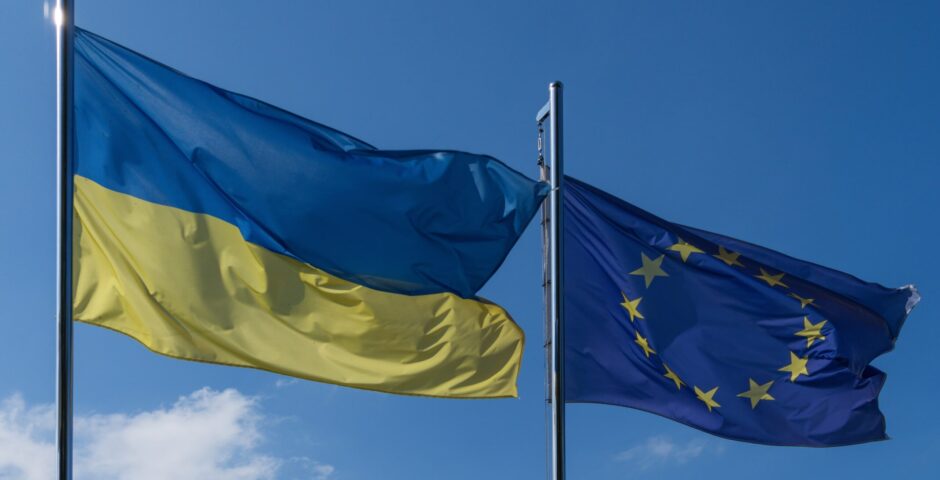The story of the feta dispute and the balsamic issue

How “made in the European Union” is guaranteed.
The European Union is rich in a variety of culinary traditions. Examples include French camembert, Italian Parma ham, Greek Ouzo and Irish Whiskey. Europeans are proud of their culinary delights and for this reason, these products are legally protected by the EU through geographical indications. That may seem boring, but it certainly isn’t. Many products you probably consume regularly are protected by these geographical indications, including Dutch Gouda cheese and Greek feta. Sounds nice to protect traditional regional products, right? However, as the title suggests, the situation is not just peace, love and happiness; conflicts have regularly arisen due to geographical indications, both within the EU, and internationally. The “made in Europe” stamp is not just a way for you as a consumer to know that your Mozzarella di Bufala comes from Italy, there is much more to it than that.
What are geographical indications?
Geographical indications are part of European legislation and are used to legally protect products produced in Europe. The indications are used almost exclusively for agricultural products and alcoholic beverages. A geographical indication protects the unique characteristics of products associated with the region from which a product originates. It also ensures the preservation of traditional knowledge and techniques. Products are protected from imitation and misuse by geographical indications. For example, it is prohibited to produce protected products even if the origin of a product is indicated or the name consists of an expression such as “Parmesan-style cheese”. Producers can produce products protected by geographical indications in exactly the same way as the original, but the name may not be used. The purpose of geographical indications is to ensure product quality and preserve traditions.
There are three different geographical indications, each with different requirements. The strictest geographical indication is the Protected Designation of Origin (PDO), where product names are most closely linked to the place where they are produced. For PDO-labelled products, all parts of the production process must take place in the specific area where the product officially comes from. For example, oil from Kalamata olives must be produced entirely in the Kalamata region of Greece and only local olives may be used. A gradation below the PDO is the Protected Geographical Indication (PGI) designation, where quality or a specific characteristic can be linked to a region. With PGI products, at least one part of the production process must take place in the region. Consider Ardennes ham; although produced in the Ardennes, the meat does not necessarily come from pigs raised in the region. The last designation, simply the Geographical Indication (GI), is very similar to the PGI, but is specifically for spirits and flavoured wines. Like PGI products, products labelled GA require at least one step of the production process to take place in the region. For example, Irish whiskey is distilled in Ireland, but the raw materials do not necessarily come from Irish soil.
Geographical indications exist for a reason. The indications guarantee consumers that a product is of high quality and not counterfeit. There are benefits not only for consumers, but producers and the EU itself also benefit from geographical indications. Since GIs prohibit the production of products with a protected name, these products are in high demand from abroad and can often be sold at a higher price. This favours the export of goods with a protected status and makes geographical indications very profitable.
Conflicts caused by geographical indications
The use of geographical indications seems like a noble idea to protect local, regional and national products, but in practice the indications have repeatedly led to conflicts since their introduction. Most conflicts, however, are not about where a product officially comes from. Instead, conflicts arise because many protected products are seen as too generic, meaning that geographical indications too often indicate a type of product rather than a specific product. A well-known example of this is champagne: officially, the drink may only bear the name champagne if it was produced in the French region of the same name. In practice, we associate many alcoholic bubble drinks with champagne, when in fact that is not champagne. If you want to know more about political issues surrounding champagne, be sure to check out this article!
Prior to the introduction of the Greek geographical indication for feta in 1996, several countries, including Germany, France and Denmark, produced their own variant of the cheese. The introduction of the geographical indication forced producers to change the name, for example, to “white cheese”. Thus, only if feta came from Greece could it be called feta. Not unexpectedly, the introduction of the geographical indication led to dissatisfaction among countries that were suddenly no longer allowed to produce feta, at least, not under that name. Initially, the geographical indication was rejected by the European Court of Justice in a lawsuit brought by Germany and Denmark. However, the ruling was invalidated by the European Commission in 2002, and the geographical indication for feta then officially came into effect.
The conflict is still rumbling on, twenty years after the European Commission ruling. In July of this year, the European Court of Justice again reiterated that cheese can only be labelled as feta if it comes from Greece, after Denmark allowed white cheese to be exported to countries outside the EU under the name “feta”. However, do not be alarmed by a lack of Danish feta; Denmark still has its own cheese protected by a geographical indication, the Danish Danablu.
The existence of a geographical indication for a product does not mean automatic success in court, as Italy has experienced. The relationship between Italy and Slovenia has soured considerably in recent years due to a conflict surrounding the equally sour balsamic vinegar. Italian Aceto balsamico di Modena, or balsamic vinegar from Modena, enjoys a protected status and therefore may only be produced under that name in Modena and Emilia-Romagna. Recently, however, Slovenia announced that it would standardise its vinegar production, allowing it to also produce balsamic vinegar under that name. Italy disagreed and went to the European Court of Justice, seeing it as a threat to Italian tradition and, not unimportantly, the balsamic vinegar market that accounts for about one billion euros.
Whether this lawsuit will be as successful as Greece’s remains to be seen. In 2009, the year the geographical indication for Aceto balsamico di Modena was introduced, Italian balsamic vinegar makers immediately lost a lawsuit filed against a German company selling products under the name Aceto balsamico. The European Court of Justice ruled that the name Aceto is a generic word, as it is simply the Italian word for vinegar, and that balsamico is a word to describe vinegar with a bittersweet taste. For this reason, it was decided that only the name Aceto balsamico di Modena is protected by the geographical indication, but not Aceto or balsamico. No decision has yet been made in the current lawsuit against Slovenia, but it is likely that the Court will make the same ruling as in the case against Germany.
War on Terroir
So where the line is drawn between general product names and specific names remains vague. After all, why is balsamic vinegar generic, but feta specific to Greek white cheese? This ambiguity is also regularly criticised from outside the EU. The United States, in particular, has repeatedly made clear that there is little willingness to respect geographical indications. This conflict is also referred to as the War on Terroir. The word “terroir” refers to the connection between the location where a specific product is produced and its quality, for example, that only grapes from Champagne are suitable for making champagne. The problem for the US is that many products protected by a geographical indication are produced in the US for American consumers. Geographical indications force US producers to come up with new names for well-known products such as Champagne, port and Parma ham because these names are protected.
As mentioned earlier, the purpose of geographical indications is to protect traditional products and ensure quality. The criticism from the US calls into question the importance of the region in producing products. Is feta really of better quality if it is made in Greece instead of Denmark? According to the EU, geographical indications protect traditional products from counterfeiting and fraud, but in the US, geographical indications are mostly seen as a form of European protectionism, leaving no room for competition. The fact that a product originates from a European state should not necessarily mean that it can only be produced there, the US contends. After all, is a product really of better quality if the production process is exactly the same, but the location where a product is produced is different?
Part of the American criticism, besides protectionism, is the fact that some products protected by geographical indications are often seen as generic products. Consider Parmesan cheese that we often sprinkle over our pasta. Parmesan cheese can officially only come from the regions around Parma in Italy. In the US, Parmesan cheese, or actually cheese similar to it, is produced by Kraft. Officially, this cheese may not be called Parmesan, and even Parmesan-style cheese is not allowed, making it difficult for American producers to name products, if they adhere to geographical indications at all.
The future of geographical indications
We can say that the introduction of geographical indications by the EU has been very successful in many ways. After all, many products protected by a geographical indication are immensely popular worldwide. Products such as champagne, feta, whiskey and Gouda cheese have become general concepts all over the world. That is precisely where the problem lies; many protected products are very popular and are therefore increasingly seen as generic products. Parmesan cheese is not necessarily associated with the fact that it is produced in Italy’s Parma region, but is instead seen as a separate type of cheese. The same goes for feta, which is seen as a different product from white cheese, even though chances are the differences between the two are minimal.
This generalisation makes it increasingly difficult to maintain geographical indications, and one might wonder whether it should be as strict as it is now. If aceto balsamico is a general term and protected only by the addition of di Modena, can’t we do the same with other products? As the term “geographical indications” actually suggests, the names of protected products should include a reference to the place of origin. Existing examples include Tiroler Speck and Camembert de Normandie. Perhaps it is time to revisit and update the current geographical indications so that the term Parmigiano Reggiano remains protected, but “Parmesan” becomes more accessible.
Sabine Herder is doing a master’s degree in Crisis and Security Management at Leiden University with a specialisation in Intelligence and National Security. Prior to this, she did a bachelor’s degree in Liberal Arts and Sciences with a major in International Relations.
Image: Shutterstock




